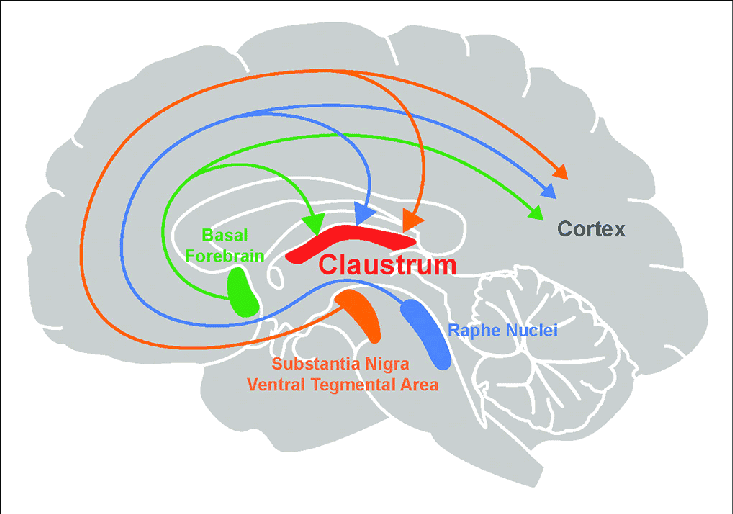New research proposes that the claustrum, an area in our brains that has been proposed to be the ‘seat of consciousness’, instead acts as a router, sitting at the center of the brain’s communication network.

Back in 2005, the legendary scientist Francis Crick, the researcher that discovered DNA, first proposed that the claustrum is the region of the brain that handles our awareness of ourselves and the world around us — in short, that it is the seat of consciousness. But new research at the University of Maryland School of Medicine says this isn’t really the case.
According to their findings, the claustrum behaves more like a high-speed internet router. It takes executive commands from certain areas of the cortex, the ones which form complex thoughts, and uses these to generate complex ‘networks’ throughout the brain. It then coordinates these networks to ensure that different parts of the cortex can work together to quickly accomplish complex, demanding cognitive tasks in day-to-day life.
Bringing it all together
“The brain is the most complex system in the known universe. It is these data-driven theoretical advances that propel our knowledge forward toward harnessing that complexity for improving human life,” said Brian Mathur, PhD, Associate Professor of Pharmacology at UMSOM and corresponding author of the paper. “As the most highly connected structure in the brain, the claustrum is a window into the enigma of the brain, the mind.”
Understanding how the brain forms and handles functional networks, and how the claustrum fits inside these processes, would go a long way toward helping patients with disorders from addiction to schizophrenia. These disorders are characterized by disorganized brain networks, which produce the outward effects of these disorders.
For the study, the team conducted a series of experiments using both model animals and human participants. Among these, one focused on turning off the claustrum in conscious lab mice. The animals didn’t lose consciousness and continued to walk around normally. This was the first hint that the claustrum wasn’t involved in the handling of consciousness, as inactivation of its function in the earlier experiments did not lead to a loss of consciousness.
Next, the mice were given a simple and a difficult cognitive task, and compared how they responded to either when their claustrum was turned off. While control mice could successfully perform both tasks, the experimental mice were not able to complete the difficult tasks.
Building on this morsel of information, the team organized a study involving human participants. They were asked to engage in a series of either simple or complicated mental tasks while their brains were monitored using functional MRI. While performing a difficult task, the participants’ claustrum would show a high degree of activity — but it would remain almost unactivated during simple tasks.
Furthermore, the activation of the claustrum coincided with the activation of a network in the cortex that previous research has shown is involved in optimal cognitive performance.
For now, the data strongly suggests that the claustrum performs a networking function, coordinating the activity of different areas of the brain while they are working together to accomplish demanding tasks. It also shows that the hypothesis of the claustrum as the seat of consciousness isn’t supported by real-life data.
Going forward, the authors plan to continue studying how the claustrum manages this networking function, and how it adapts to changing demands in order to best support high-level cognition.
The paper “A role for the claustrum in cognitive control” has been published in the journal Trends in Cognitive Sciences.









